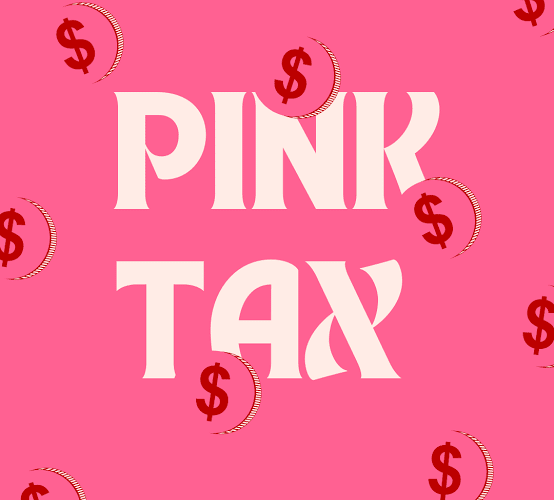In recent years, there has been an increased awareness of the “pink tax” – gender-based pricing where women are charged more than men for identical products or services. While the existence of the pink tax is not news to many women, what is becoming clear is the significant financial impact it has on women’s lives.
The financial impact of the tax can be significant, and it adds up over time. For example, a woman who pays $1 more for her shampoo than her male counterpart pays an extra $10 per year on personal care products. This is a hidden cost that disproportionately affects women, and it is time for it to be brought to light.
Awareness of the tax is the first step to combating it, and we can all do it. However, this article covers everything you should know!
What Is The Pink Tax?
The meaning of the pink tax is well known to some people, but many still ask: What is the Pink Tax? It is a term that describes the extra cost that women are charged for products and services marketed to them. This includes everything from personal care items to clothing to home goods.
Some companies charge more for feminine products. Additionally, women are often seen as being less price-sensitive than men, which means they are willing to pay more for items. It is an unfair burden on women that often goes unnoticed. It is one of the many ways women are disadvantaged in the marketplace. By being aware of the pink tax, women can take steps to avoid it and save money.
Who Created The Pink Tax?
The term was first coined in the early 1990s by women’s rights activists in the United States.
It is an example of gender-based pricing, which is illegal in some countries. In the United States, there is no federal law prohibiting gender-based pricing, but some states have laws that prohibit it.
How Does The Pink Tax Work?
While the pink tax is not explicit, it is a hidden cost that disproportionately affects women. There are some reasons for its existence. It is because feminine products are luxury items, and their tax rate is higher. Another reason is that the products are smaller and less durable than men’s, which means they are more replaceable. All these lead to higher prices for women’s products over time.
How Much Does The Pink Tax Cost?
It costs women an extra $1,352 per year.
The pink tax is an example of gender-based pricing, which is illegal in some countries but not in the United States. While there have been some attempts to pass laws regulating gender-based pricing, they have all been unsuccessful.
This is likely because it can be difficult to prove that a company charges more for a product simply because it markets to women. However, the fee or charge is still a real issue for women in the United States. It is something that should be taken into consideration when making purchase decisions.
What Are Examples Of Pink Tax?
These products are often similar to men, but they cost more. For Pink Tax Examples, women’s razors are often more expensive than men’s razors, even though they are the same product.
There are many Pink tax examples in the United States. Women’s clothing is often more expensive than men’s clothing, and women’s care products, like shampoo and soap, are more pricey than similar products for men. And even things like bicycles and home improvement tools are often marketed to women at a higher price than men.
What Is The Impact Of Pink Tax?
The pink tax is a form of gender-based pricing. It is something that women have been dealing with for decades.
There is no definitive study on the tax, but price disparity exists even when the products are identical except for the color or scent. It is a hidden cost that women are faced with every day, and it can add up over time.
The impact is significant, especially for low-income women who can’t afford to pay more for the same products. This gender-based pricing is unfair; it puts an extra burden on women who are already struggling to make ends meet.
Some Ways To Avoid The Pink Tax?
The “pink tax” is the extra amount that women are charged for products and services that are marketed to them. This includes everything from clothes to dry cleaning to personal care products. While there is no sure way to avoid this tax, there are a few things that women can do to try to minimize the amount they pay.
- One way is to buy gender-neutral products. This includes things like unisex clothing, personal care products that can be used by either gender and household items that are not marketed to either gender.
- Another way is to buy generic or store-brand products instead of name-brand products. Store brands are often cheaper than name brands, and they are usually of comparable quality. In other words, buy products from companies that are transparent about their pricing and do not charge more for similar products marketed to women.
- Women can try to negotiate for lower prices on products and services. This is especially effective when dealing with service providers like plumbers, electricians, and car mechanics.
- And finally, you can support businesses working to end the pink tax.
Is Pink Tax Debunked?
There is a lot of debate surrounding the existence of the “pink tax.” This is the notion that women pay more for products and services than men. While some studies seem to support this idea, there is also a lot of evidence that debunks it.
New York City Department of Consumer Affairs found that, on average, feminine products were 7 percent more expensive than men’s. However, this study got criticisms for not considering many important factors, such as quality.
Some studies looked at various products and found no evidence of a pink tax, while others even found that women’s products are often cheaper.
So, is the pink tax debunked? It is hard to say for sure. Though some evidence supports the existence, there is also a lot of evidence that it is debunked. Ultimately, more research is needed to determine whether or not the pink tax is debunked.
Is The Pink Tax Real?
So many individuals tend to ask the question: Is the Pink Tax Real? Yes, the pink tax is a real phenomenon in the United States, and women pay more for products than men.
There are many reasons the tax exists.
First, there is a perception that women are willing to pay more for products.
Second, companies know that women are more likely to purchase these products, so they charge a premium.
Third, it is likely that businesses use it to offset the costs of marketing and production for these items. In other words, the pink tax is simply a way for businesses to make more money off of women.
The pink tax is a real issue for women in the United States, and it is something that needs proper attention.
Does Pink Tax Still Exist?
In the United States, you can find pink tax on items like clothes, toys, and personal care products. While the tax is not a new phenomenon, it has been getting more attention in recent years as women have become more vocal about how they are treated unfairly by the marketplace.
There is no definitive answer as to whether or not the pink tax still exists in the United States. However, there is certainly evidence that suggests that women are still being charged more for certain products and services than men. In some cases, the price difference between similar products marketed to men and women can be as much as 20%. This discrepancy attributes to the fact that women are a more lucrative target market for many companies. As such, companies are willing to charge women more for their products to make a higher profit.
While it may not be as prevalent as it once was, the charges are still a reality for many women in the United States. This issue is likely to continue to be a source of frustration for women until there is more equality in the marketplace.
Why Do Women’s Clothes Cost More Than Men’s?
There are a few reasons women’s clothes cost more than men’s.
- Firstly, female clothes have more intricate designs and details than men’s.
- Secondly, women’s clothes have more expensive materials than men’s clothes.
- Thirdly, the market for women’s clothes is generally much larger than the market for men’s clothes, which means that there is more competition among designers to sell their clothes at higher prices.
- Finally, it is simply a matter of supply and demand – if more women are willing to pay more for clothes than men, designers will charge more for their clothes and others.
Where Does Pink Tax Money Go?
There is no direct answer to this question because no organization or government collects the pink tax. Instead, it is the charges of products or services from women.
This price difference can be found on a wide range of products, from razors to dry cleaning, and can add up to a significant amount of money over time. While it is difficult to say where all of this money goes, it is likely that a portion of it is profit for the companies that charge more for their female-targeted products.
In addition, some sellers may use the money to cover the cost of marketing these products to women, which can be a significant expense.
Conclusion
There is a lot of debate surrounding the concept of a pink tax or gender-based pricing. Some people argue that businesses are simply charging more for products produced for women, while others claim that the tax is a way businesses take advantage of women. However, there is no clear consensus on the matter.
One thing is for sure, though the pink tax impacts women’s wallets. In a world where every penny counts, the charge can quickly add up to a significant sum of money. For this reason, it is crucial for women to be aware of the pink tax and to take steps to avoid it where possible.






